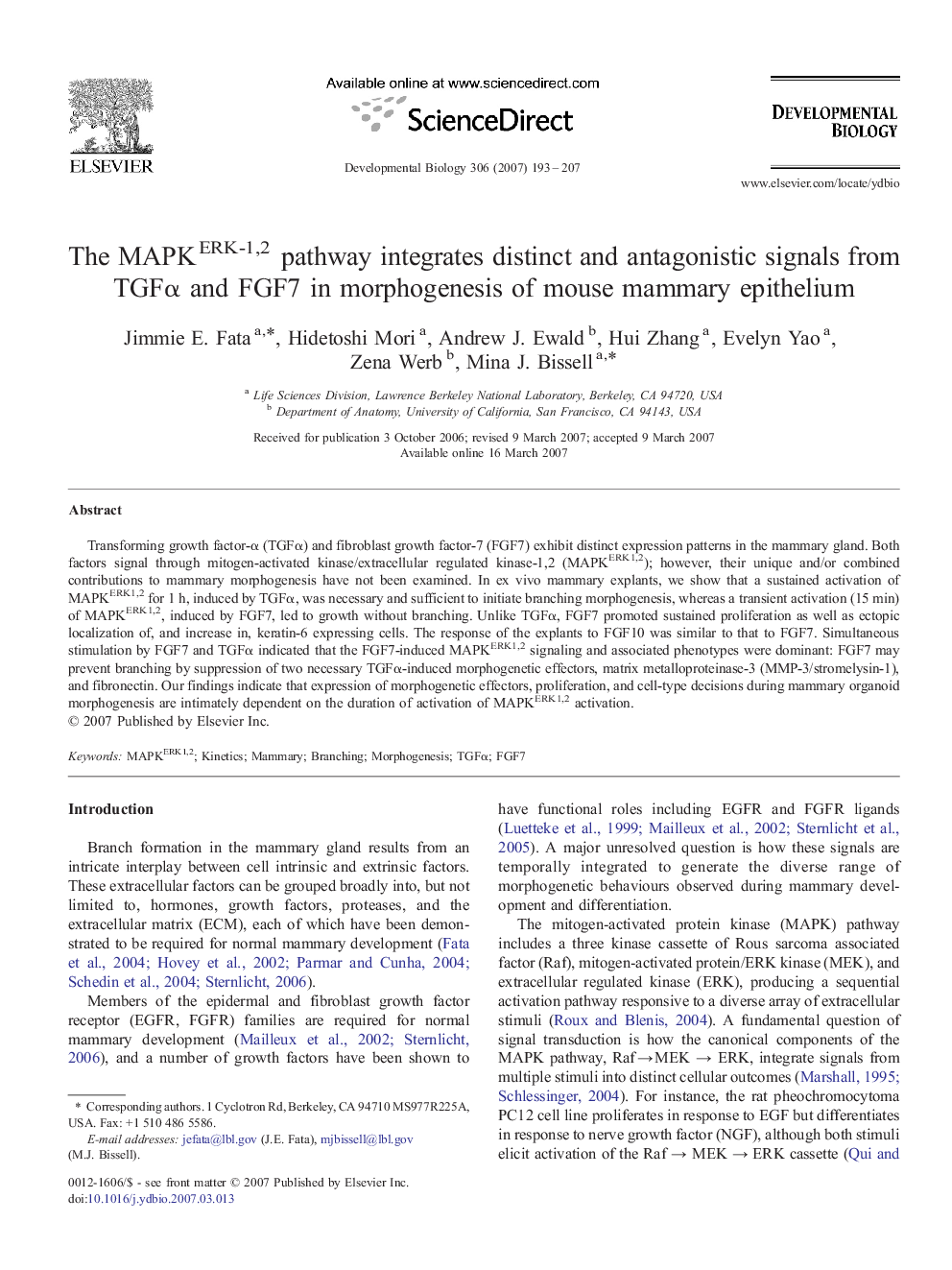| Article ID | Journal | Published Year | Pages | File Type |
|---|---|---|---|---|
| 2175114 | Developmental Biology | 2007 | 15 Pages |
Transforming growth factor-α (TGFα) and fibroblast growth factor-7 (FGF7) exhibit distinct expression patterns in the mammary gland. Both factors signal through mitogen-activated kinase/extracellular regulated kinase-1,2 (MAPKERK1,2); however, their unique and/or combined contributions to mammary morphogenesis have not been examined. In ex vivo mammary explants, we show that a sustained activation of MAPKERK1,2 for 1 h, induced by TGFα, was necessary and sufficient to initiate branching morphogenesis, whereas a transient activation (15 min) of MAPKERK1,2, induced by FGF7, led to growth without branching. Unlike TGFα, FGF7 promoted sustained proliferation as well as ectopic localization of, and increase in, keratin-6 expressing cells. The response of the explants to FGF10 was similar to that to FGF7. Simultaneous stimulation by FGF7 and TGFα indicated that the FGF7-induced MAPKERK1,2 signaling and associated phenotypes were dominant: FGF7 may prevent branching by suppression of two necessary TGFα-induced morphogenetic effectors, matrix metalloproteinase-3 (MMP-3/stromelysin-1), and fibronectin. Our findings indicate that expression of morphogenetic effectors, proliferation, and cell-type decisions during mammary organoid morphogenesis are intimately dependent on the duration of activation of MAPKERK1,2 activation.
